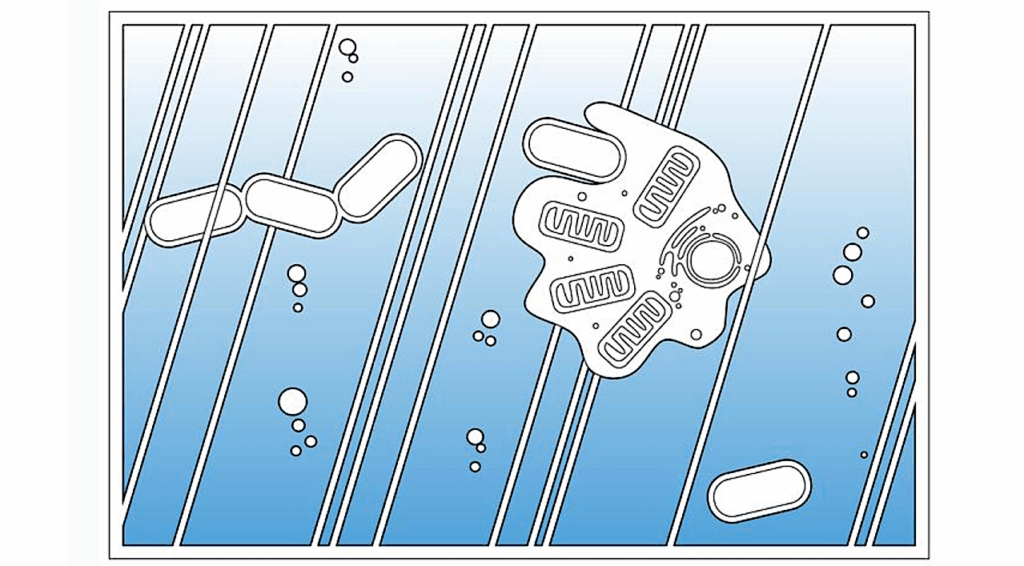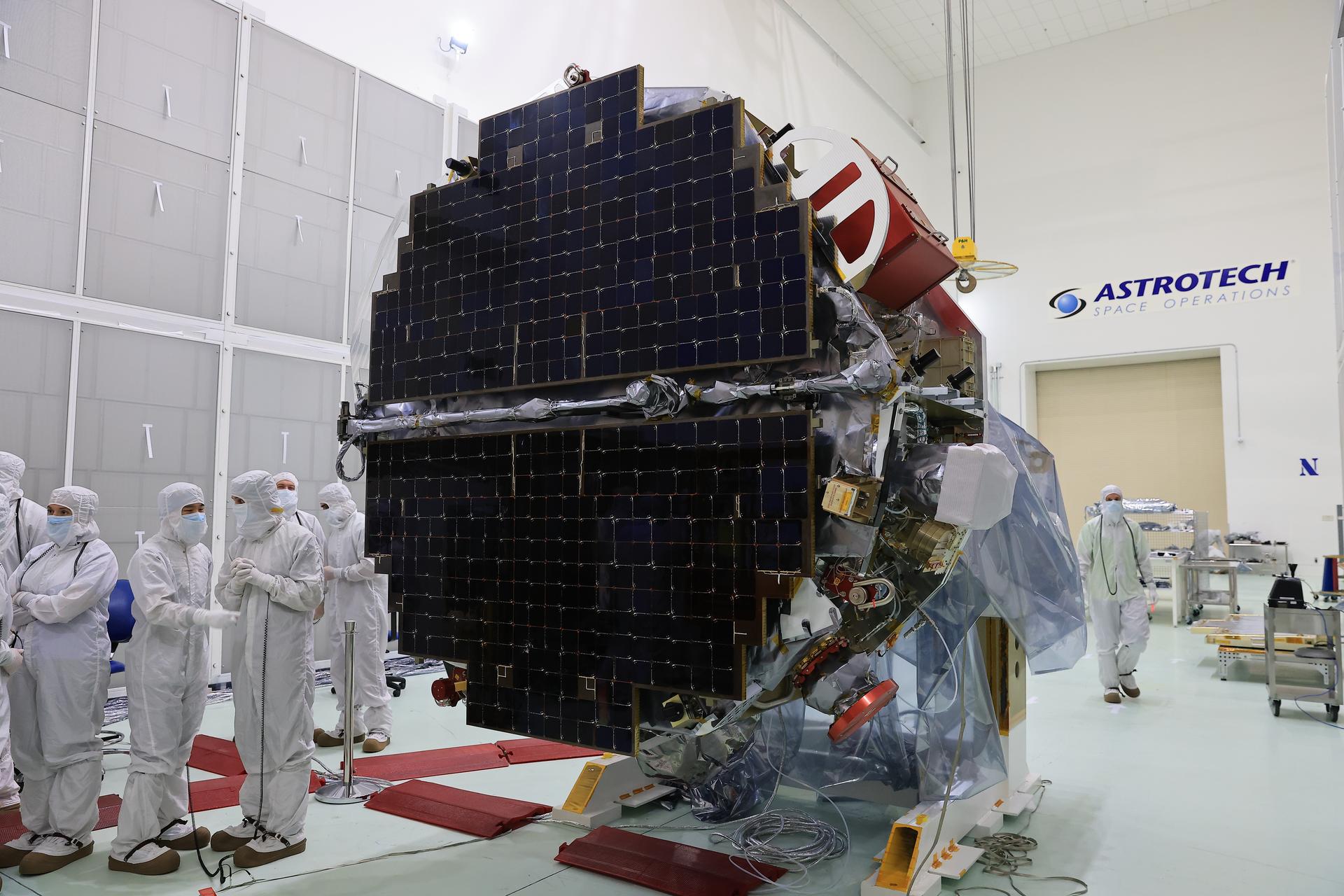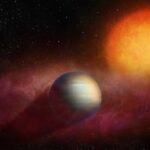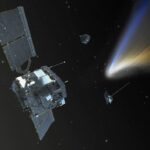Now Reading: Validation of TESS Planet Candidates with Multi-Color Transit Photometry and TRICERATOPS+
-
01
Validation of TESS Planet Candidates with Multi-Color Transit Photometry and TRICERATOPS+
Validation of TESS Planet Candidates with Multi-Color Transit Photometry and TRICERATOPS+
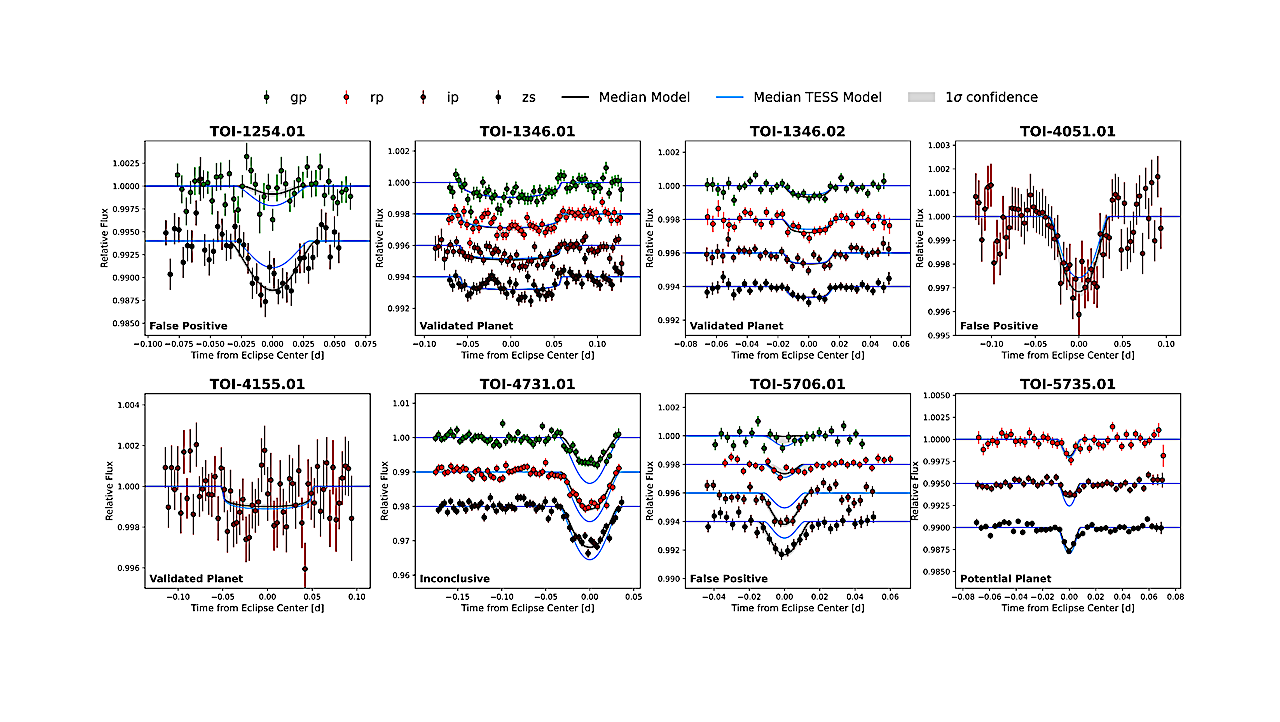
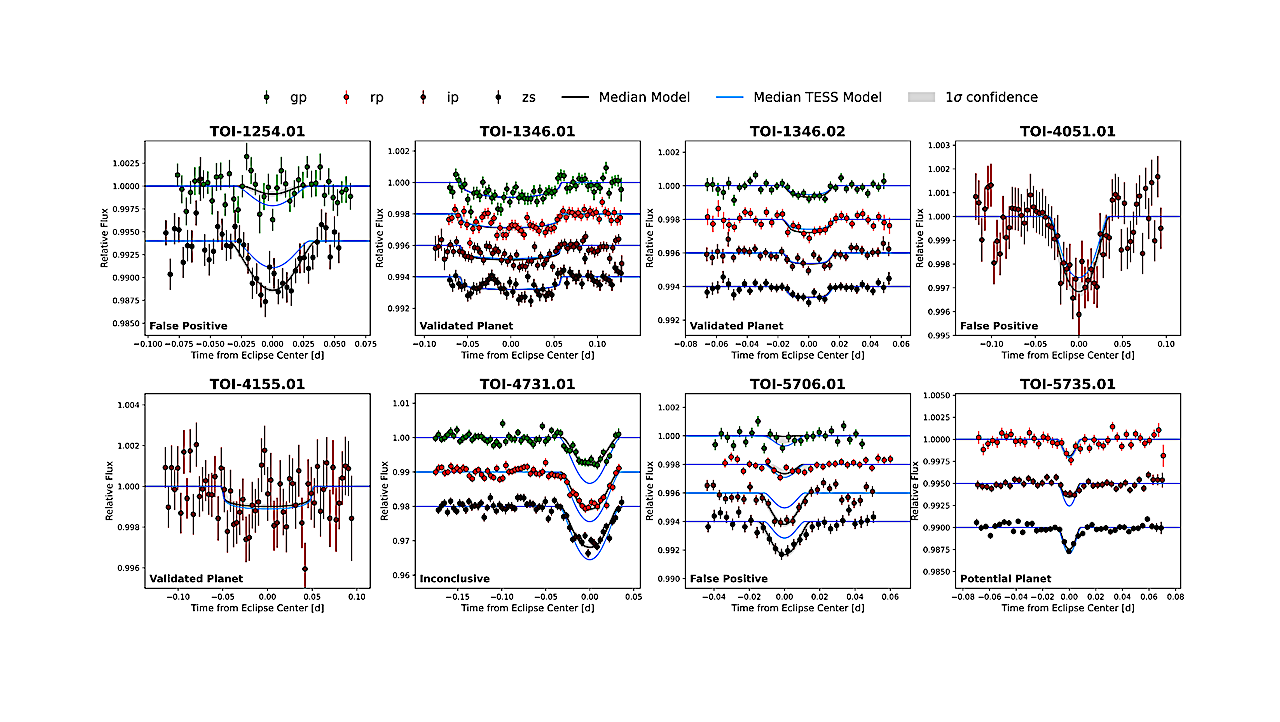
Ground-based light curves from LCOGT, KeplerCam, and MUSCAT2. The colored data points correspond to the binned data at 5 minute cadence. The solid black line is the median model from the posterior distribution. The solid blue curve is the median TESS light curve projected into the corresponding band. — astro-ph.EP
We present an upgraded version of TRICERATOPS, a software package designed to calculate false positive probabilities for planet candidates identified by the Transiting Exoplanet Survey Satellite (TESS).
This enhanced framework now incorporates ground-based light curves in separate bandpasses, which are routinely obtained as part of the candidate vetting process. We apply this upgraded framework to explore the planetary nature of 14 TESS planet candidates, combining primarily J band light curves acquired with the 200-inch Hale Telescope at Palomar Observatory with complementary archival observations from the Las Cumbres Observatory Global Telescope (LCOGT), the Fred Lawrence Whipple Observatory (FLWO), and the Teide Observatory, along with existing TESS data and contrast curves from high-resolution imaging.
As a result of this analysis we statistically validate (False Positive Probability < 1.5% and Nearby False Positive Probability < 0.1%) six new planets in five systems: TOI-1346 b, TOI-1346 c, TOI-2719 b, TOI-4155 b, TOI-6000 b, and TOI-6324 b. For these systems, we provide updated estimates of their stellar and planetary properties derived from the TESS and ground-based observations. These new systems contain planets with radii between 0.9-6 Re and orbital periods between 0.3-5.5 days.
Finally, we use our upgraded version of TRICERATOPS to quantify the relative importance of multi-wavelength transit photometry and high-resolution imaging for exoplanet candidate validation, and discuss which kinds of candidates typically benefit the most from ground-based multi-color transit observations.
Jonathan Gomez Barrientos, Michael Greklek-McKeon, Heather A. Knutson, Steven Giacalone, W. Garrett Levine, Morgan Saidel, Shreyas Vissapragada, David R. Ciardi, Karen A. Collins, David W. Latham, Cristilyn N. Watkins, Polina A. Budnikova, Dmitry V. Cheryasov, Akihiko Fukui, Allyson Bieryla, Avi Shporer, Benjamin M. Tofflemire, Catherine A. Clark, Chris Stockdale, Colin Littlefield, Emily Gilbert, Enric Palle, Eric Girardin, Felipe Murgas, Galen J. Bergsten, Hugh P. Osborn, Ian J. M. Crossfield, Jerome de Leon, Jesus Higuera, Keisuke Isogai, Mark E. Everett, Michael B. Lund, Norio Narita, Richard P. Schwarz, Roberto Zambelli, Steve B. Howell
Comments: 26 pages, 7 Figures, accepted for publication in AJ
Subjects: Earth and Planetary Astrophysics (astro-ph.EP)
Cite as: arXiv:2508.02782 [astro-ph.EP] (or arXiv:2508.02782v1 [astro-ph.EP] for this version)
https://doi.org/10.48550/arXiv.2508.02782
Focus to learn more
Submission history
From: Jonathan Gomez Barrientos
[v1] Mon, 4 Aug 2025 18:00:03 UTC (3,592 KB)
https://arxiv.org/abs/2508.02782
Astrobiology,
Stay Informed With the Latest & Most Important News
Previous Post
Next Post
-
 012024 in Review: Highlights from NASA in Silicon Valley
012024 in Review: Highlights from NASA in Silicon Valley -
 02Panasonic Leica Summilux DG 15mm f/1.7 ASPH review
02Panasonic Leica Summilux DG 15mm f/1.7 ASPH review -
 03How New NASA, India Earth Satellite NISAR Will See Earth
03How New NASA, India Earth Satellite NISAR Will See Earth -
 04And Thus Begins A New Year For Life On Earth
04And Thus Begins A New Year For Life On Earth -
 05Astronomy Activation Ambassadors: A New Era
05Astronomy Activation Ambassadors: A New Era -
06SpaceX launch surge helps set new global launch record in 2024
-
 07Space Force plans new ‘Futures Command’ amid pressure to speed up modernization
07Space Force plans new ‘Futures Command’ amid pressure to speed up modernization














